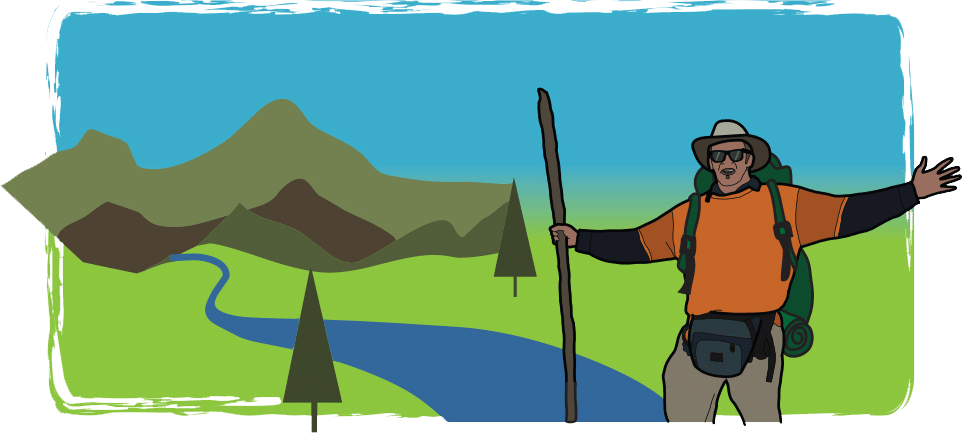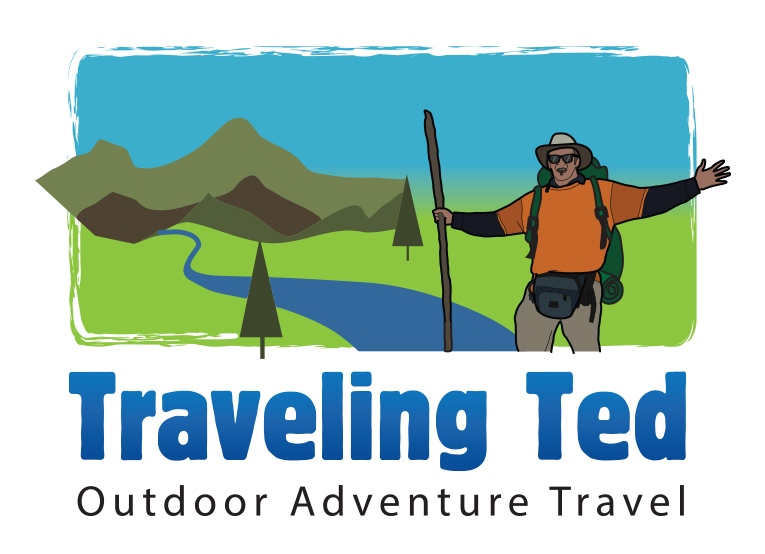The most dense population of leopards outside of Africa can be found in Sri Lanka. The best two national parks to see them are Yala National Park and Wilpattu National Park. After visiting both national parks, I cannot say one is better than the other. They are both incredible and worth a visit. If you put a gun to my head and made me choose, I would pick Wilpattu. Both places are incredible, and if you have the time, they should both be included in your itinerary. If you go to both, there is a high likelihood that you will see a Sri Lanka leopard.
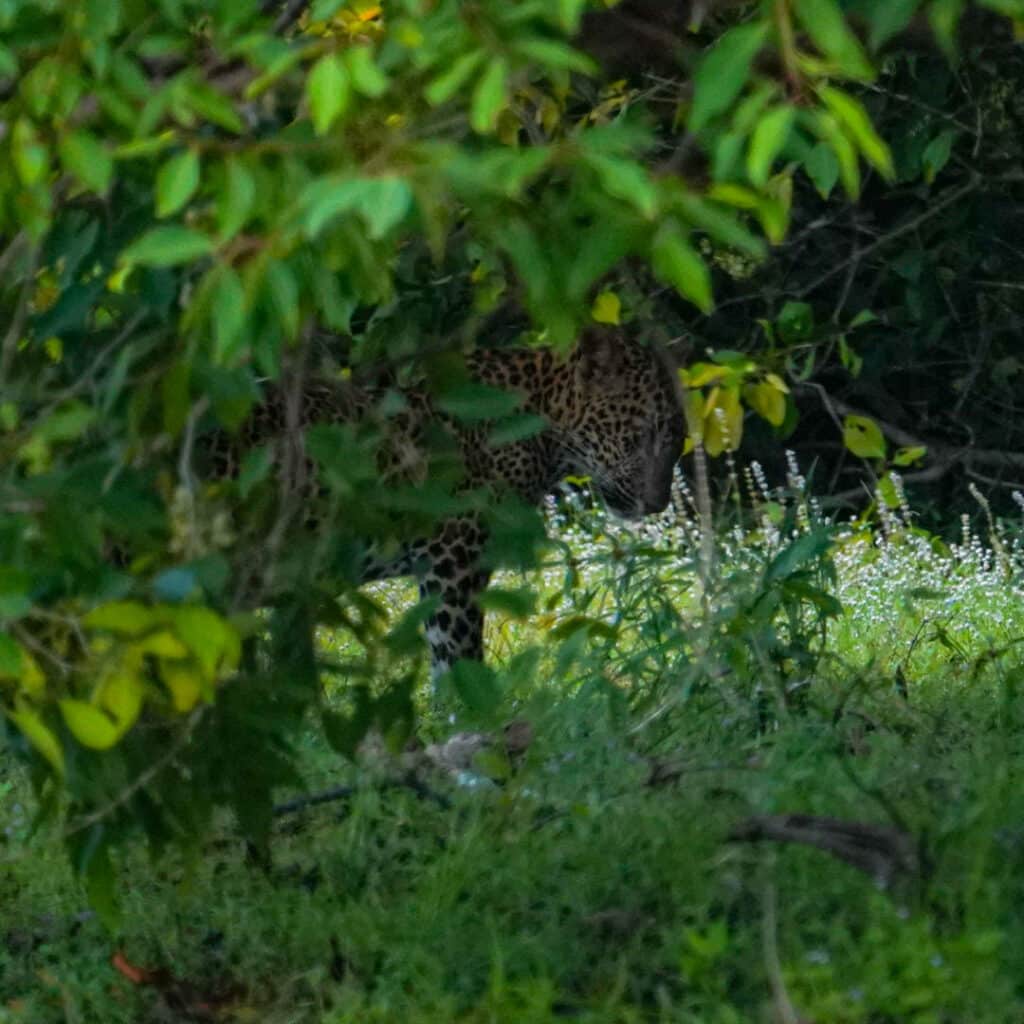
First Sri Lanka leopard spotted in Wilpattu National Park
Wilpattu National Park two day adventure
This post is part three in a three part series about visiting Wilpattu National Park. I will put the links to the first two articles at the bottom. The first two articles were about getting to Wilpattu and hotels in and around the park, and the second was more focused on the incredible bird life and other animals seen besides leopards. The Sri Lanka leopard is the star of the show. Therefore, it deserves its own post. I was lucky to see multiple leopards in both Yala National Park and Wilpattu National Park. In Wilpattu, I booked a full day tour and a half day tour to make sure I had sufficient time in the park.
Related: Kruger National Park All Out safari
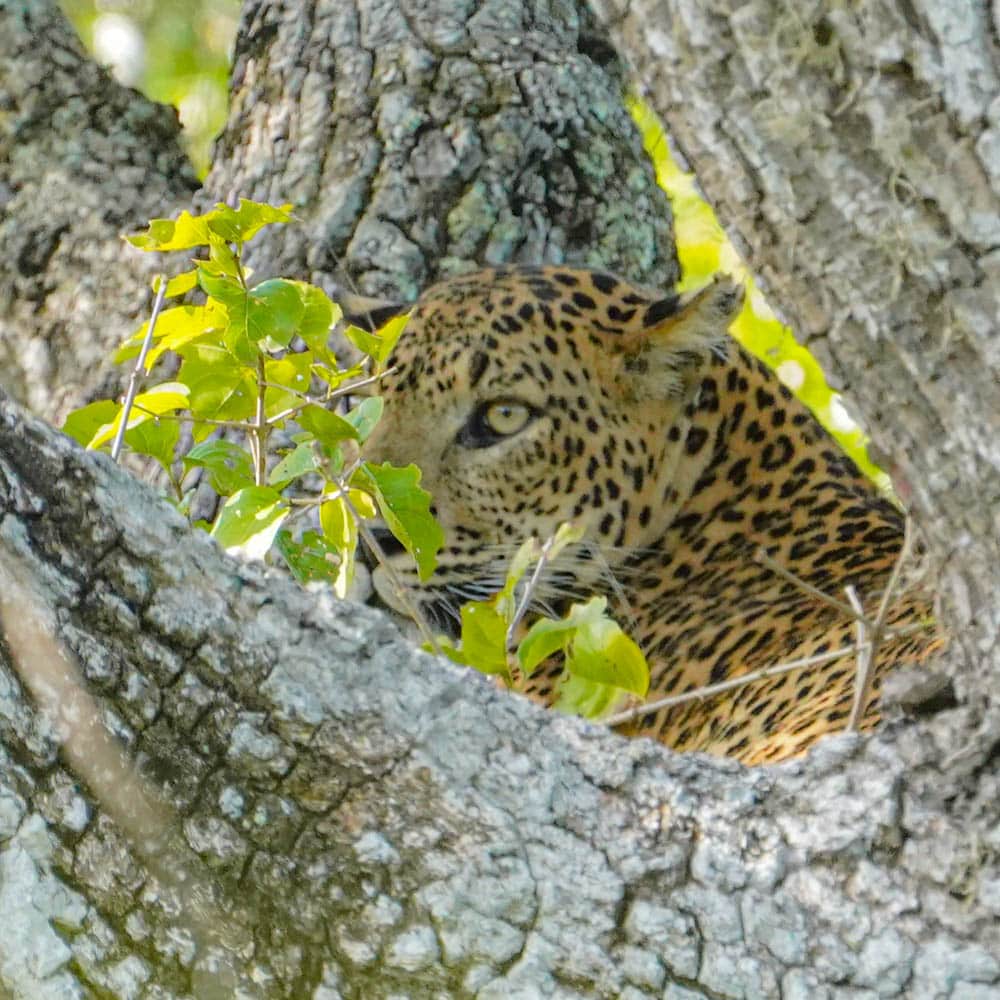
Leopard in a tree in Yala National Park
Related: Yala National Park safari
Entering Wilpattu National Park in search of the Sri Lanka leopard
Within fifteen minutes of entering the park we had seen a sloth bear, jackals, and so many birds. It was a great start. I was uber focused on the road as I really hoped to get an iconic photo of a Sri Lanka leopard on one of the red dirt roads. There is something about the color scheme of the leopard and the red dirt road that really brings out the beauty of both the animal and the scenery. Instagram features some great leopard photos in Sri Lanka, so I was hoping for an opportunity. Unfortunately, this did not happen, but I did get some decent views of leopards.
On a wildlife safari, you are never guaranteed to see what you are looking for. Leopards are nocturnal and not as active in the day, so even if you do see one it may not be incredible shot that you are hoping for. More likely it will be a sleepy leopard in a tree or in the brush. You also might get incredibly lucky and see one crossing the road or close to the road. You just never know.
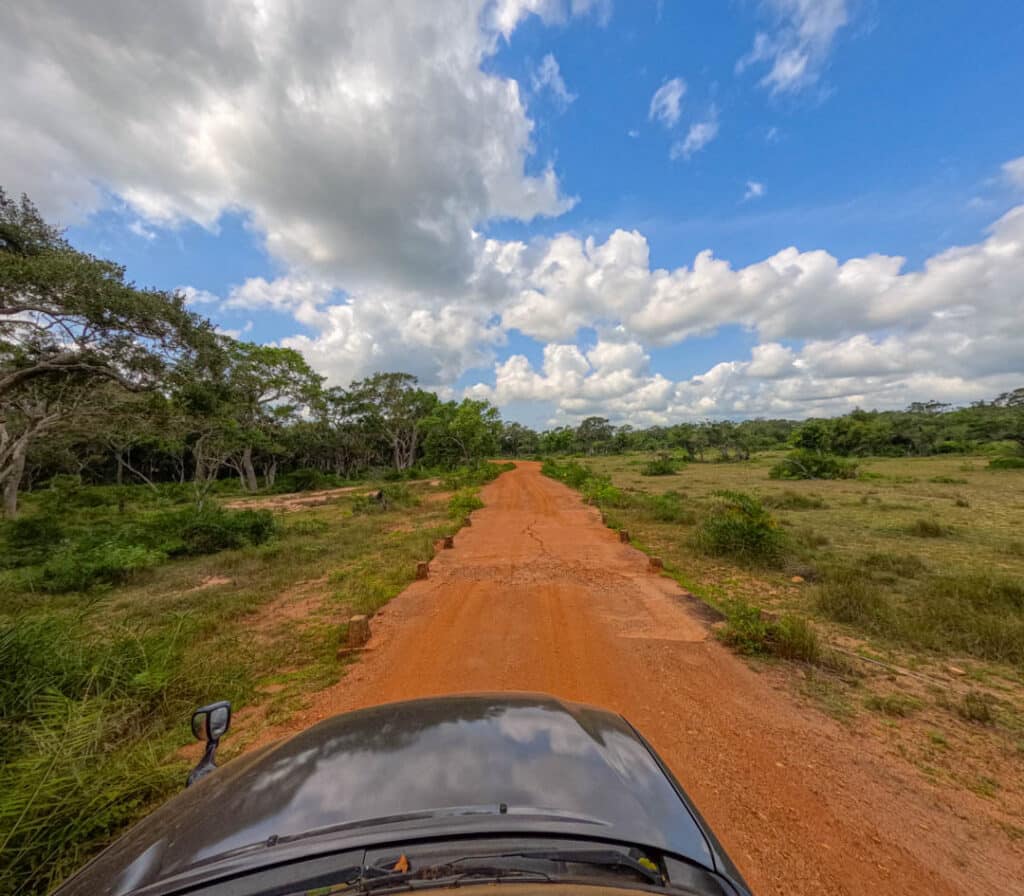
Wilpattu National Park red dirt roads
First Sri Lanka leopard sighting in Wilpattu National Park
The guides in Wilpattu work together. When one guide spots a leopard (pun intended) they let each other know. My guide excitedly informed me that other guides had found a leopard, and we drove straight there. Within 15 minutes, we came to a group of about ten cars parked near an opening. We would go long periods of time not seeing any other cars except at the beginning, the break area, and whenever someone had spotted a key animal like a leopard or a sloth bear.
For more information on visiting Wilpattu, visit this informative blog post.
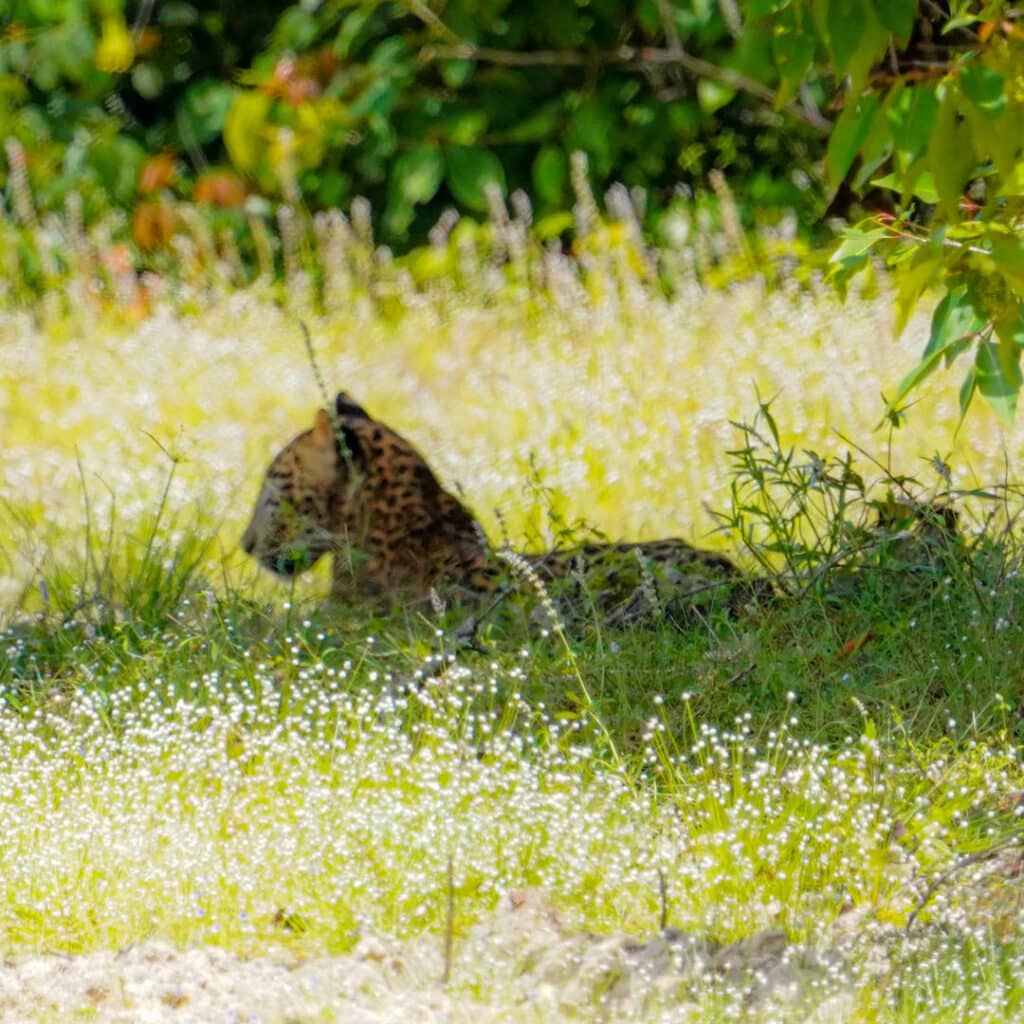
Hard to get a clear shot with vegetation in the way – Sri Lanka leopard
Mother leopard with two cubs
My guide did not speak the best English, so he did not inform me that there were cubs involved or more than one leopard. He may have tried to tell me, but I did not understand. Going through my pictures, I can now tell there was more than one leopard and that at least one was a cub. The leopards were resting in the bush across an open space about a quarter of mile away from where we parked. At one point, at least two of the leopards got up and moved to the edge of the thickets , and laid down with their back to us. One was a cub, and I think the other was the mother. This afforded us with some decent pictures. From time to time, the leopards would turn their head, so we got a good look.
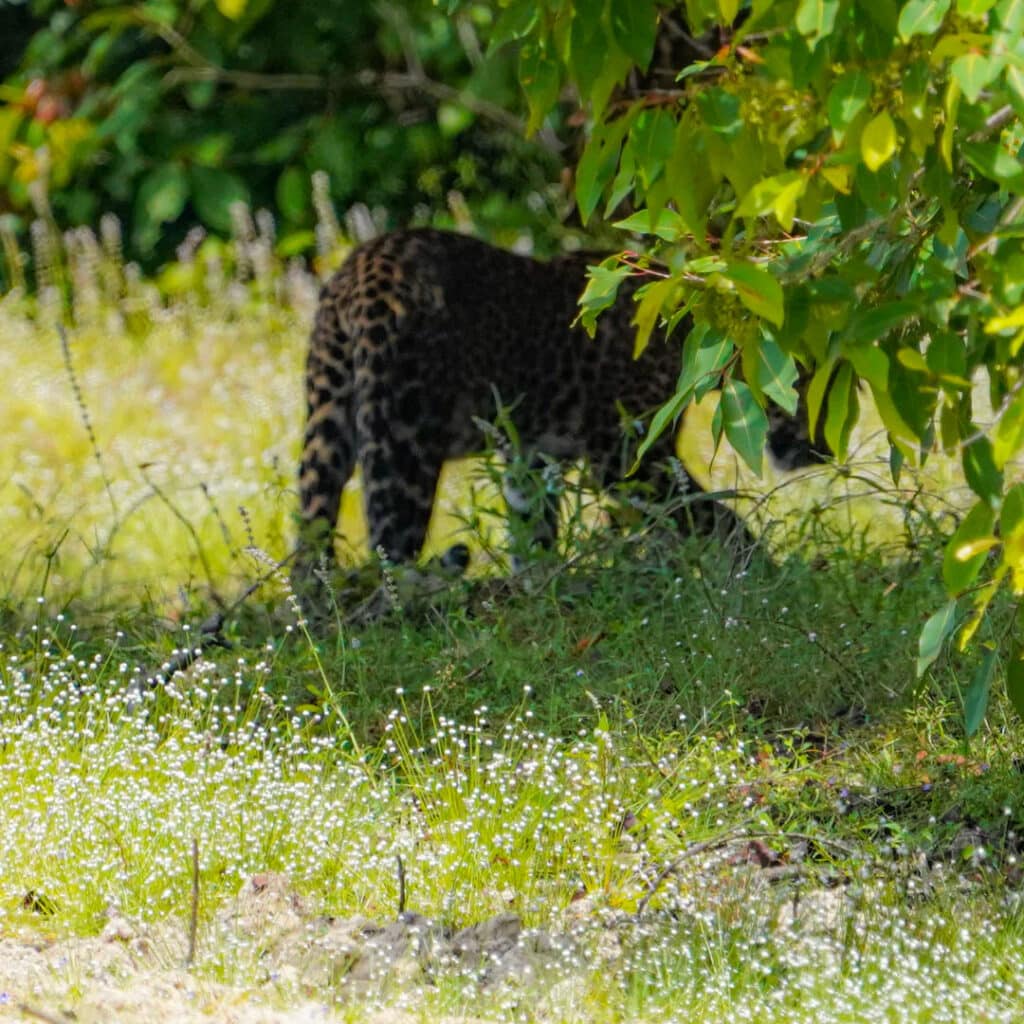
Leopard cub moving into the brush
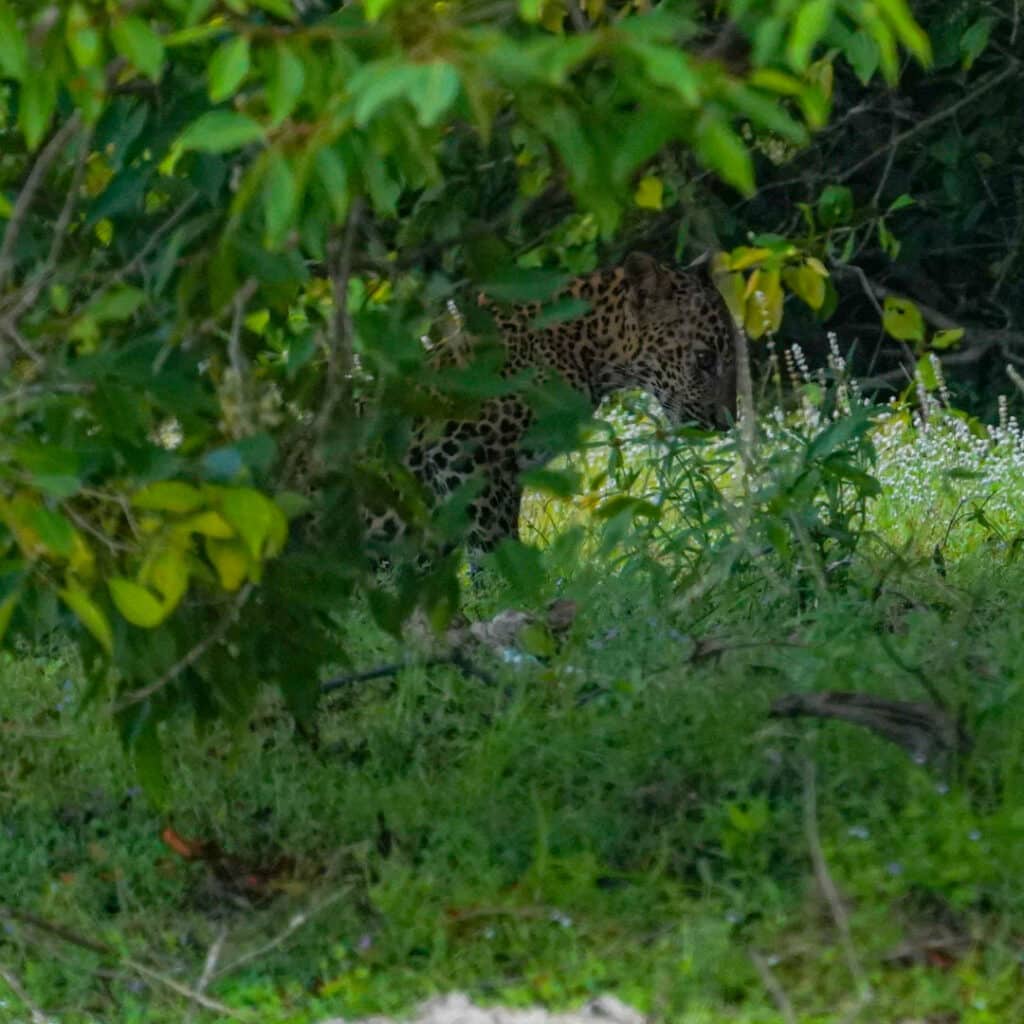
Sri Lanka leopard Wilpattu National Park
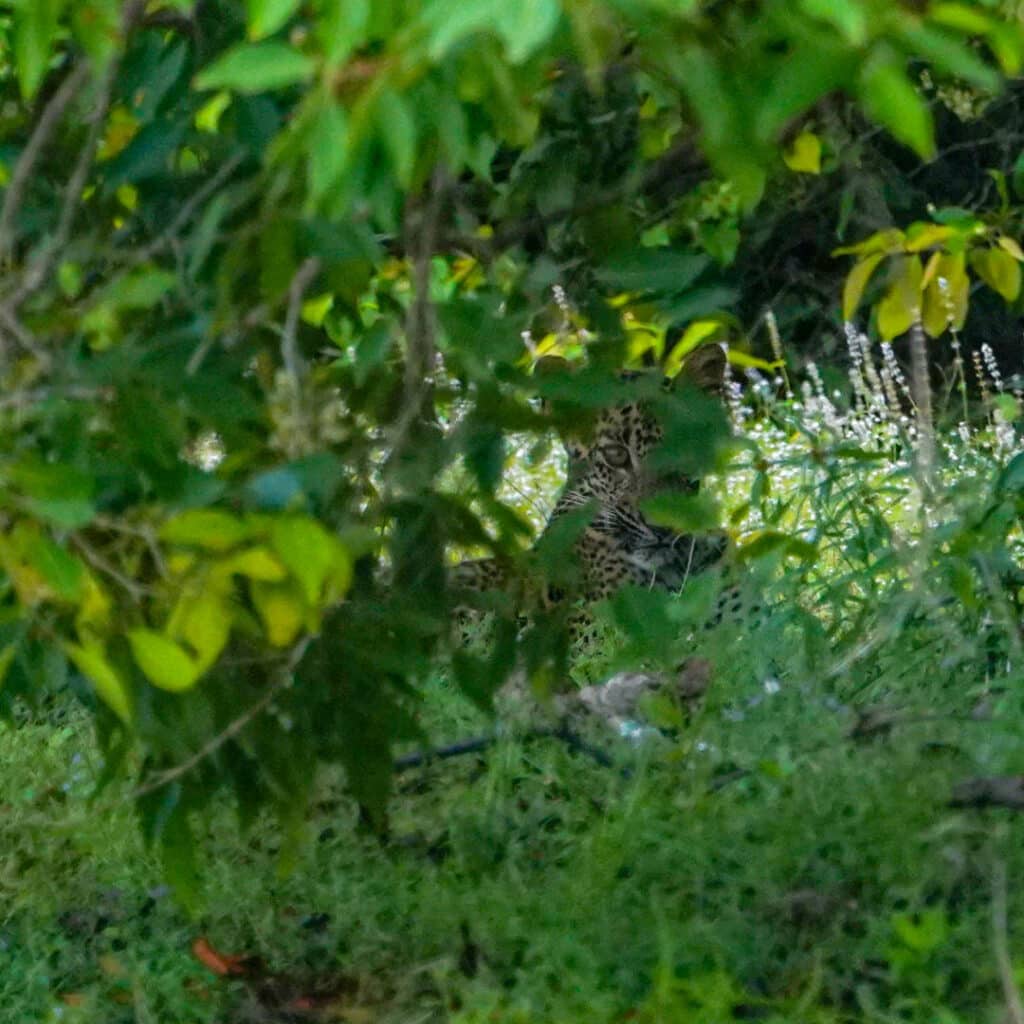
Pretty sure this one is a cub
The mother then got up and walked back into the brush. I pointed my camera at it and tried to take pictures, but the brush was too thick, so I gave up and put my camera down. All of a sudden, it appeared out of the brush and into the open. I could not see that there was a gap in the thickets, and it emerged into the open. Unfortunately, I was unable to take a picture in time. I swung my camera back and snapped a picture, but I just missed its head out in the open by a second. I wish I would not have put my camera down, but it is heavy and hard to hold up for long periods of time. The leopard never gave me a second chance as it stayed in the brush for good and exited the area.
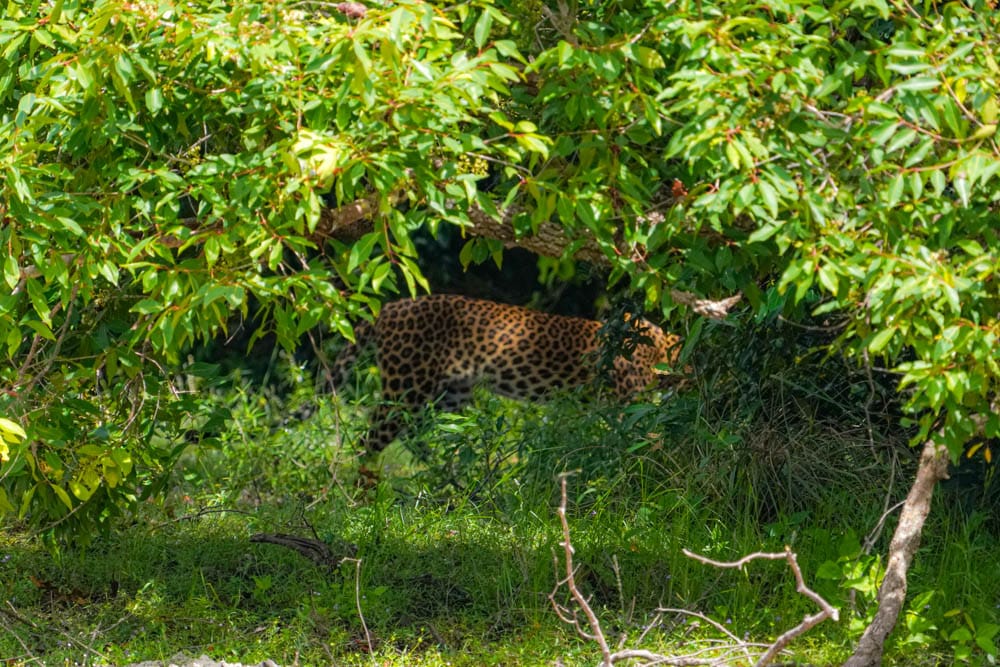
The one that got away – Sri Lanka leopard stealthily walking into the jungle
Sri Lanka leopard eating a spotted deer
We moved along after the leopards moved deeper into the jungle. We moved along with the safari, but soon we were informed of another leopard sighting. This time it was a leopard eating a spotted deer. In Africa, leopards are often seen dragging their kill up a tree in order to keep it safe from lions and hyenas. In Sri Lanka, the leopard is king, so without competition from other animals, they can keep their kills on the ground. We came upon a line of safari trucks deep in a forested area. My guide jockeyed for position and got me a decent view of the leopard. It was deep in the thickets, so focusing was a challenge.
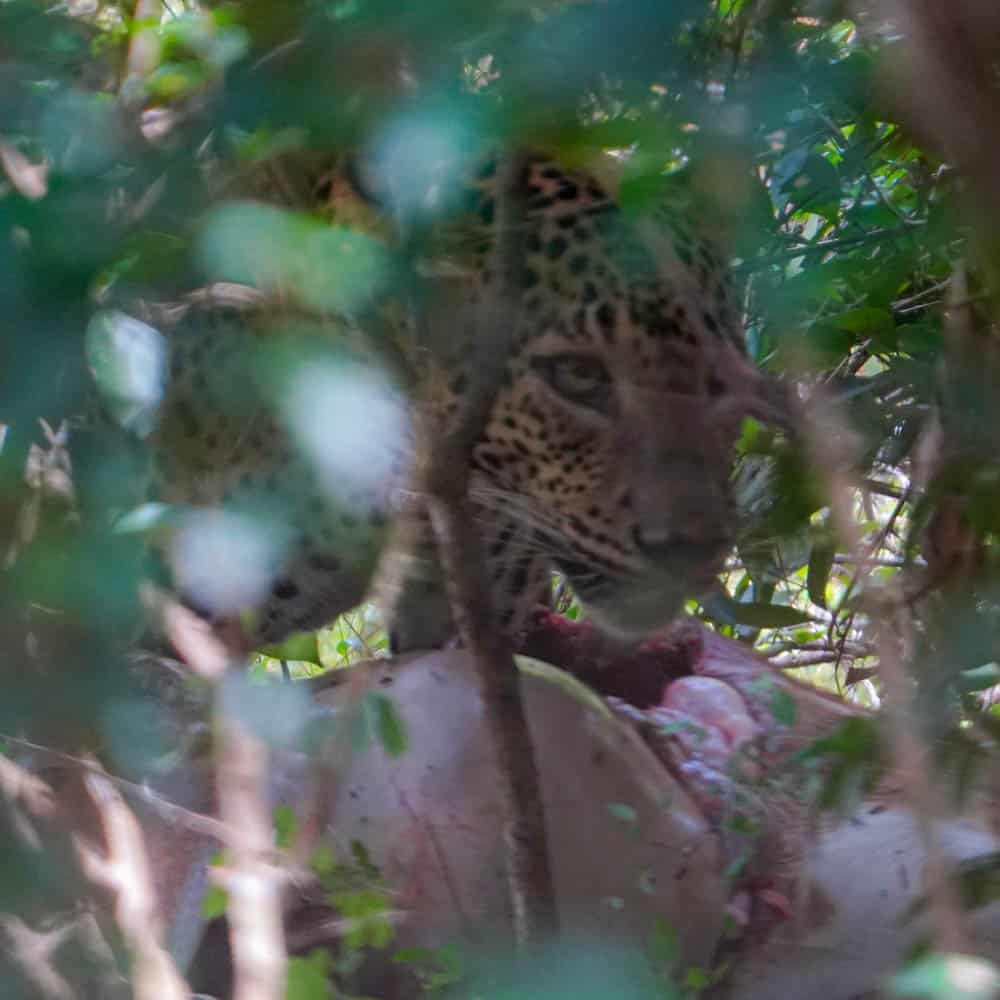
Sri Lanka leopard eating a spotted deer
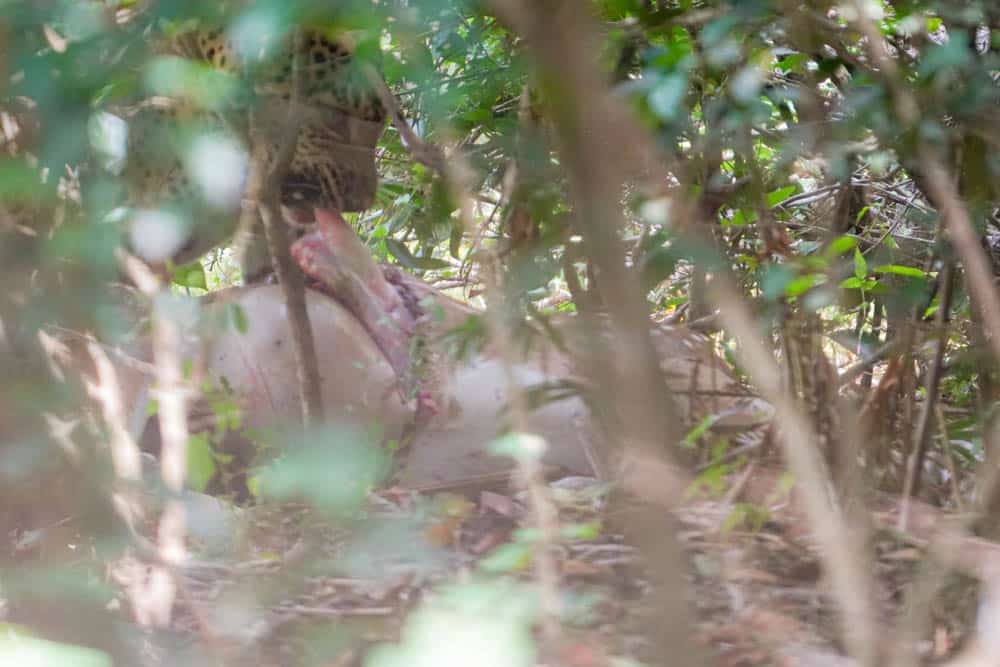
Sri Lanka leopard eating a spotted deer
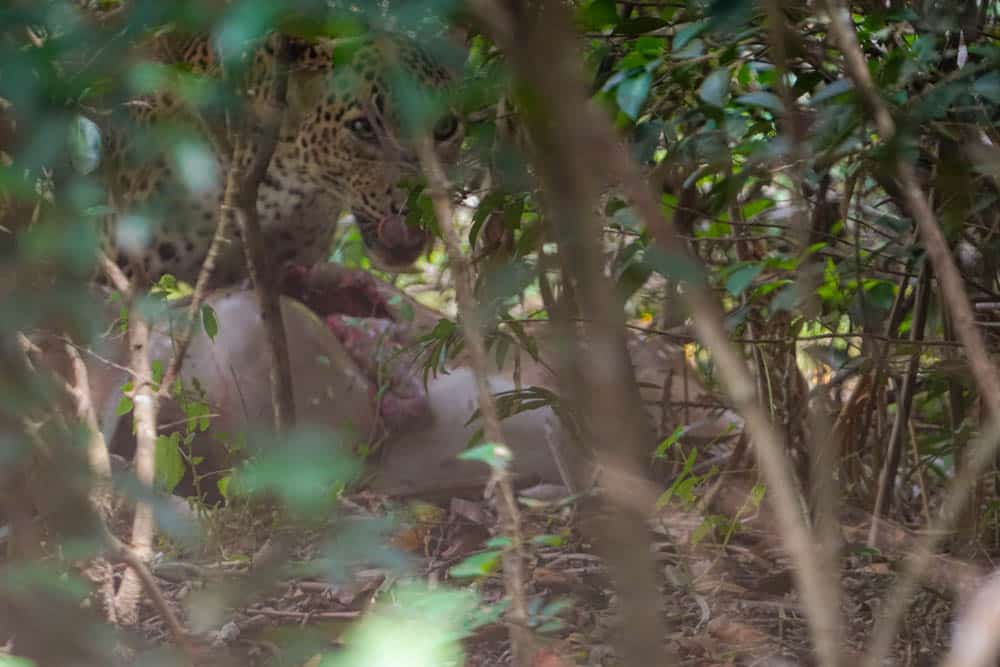
Sri Lanka leopard eating a spotted deer
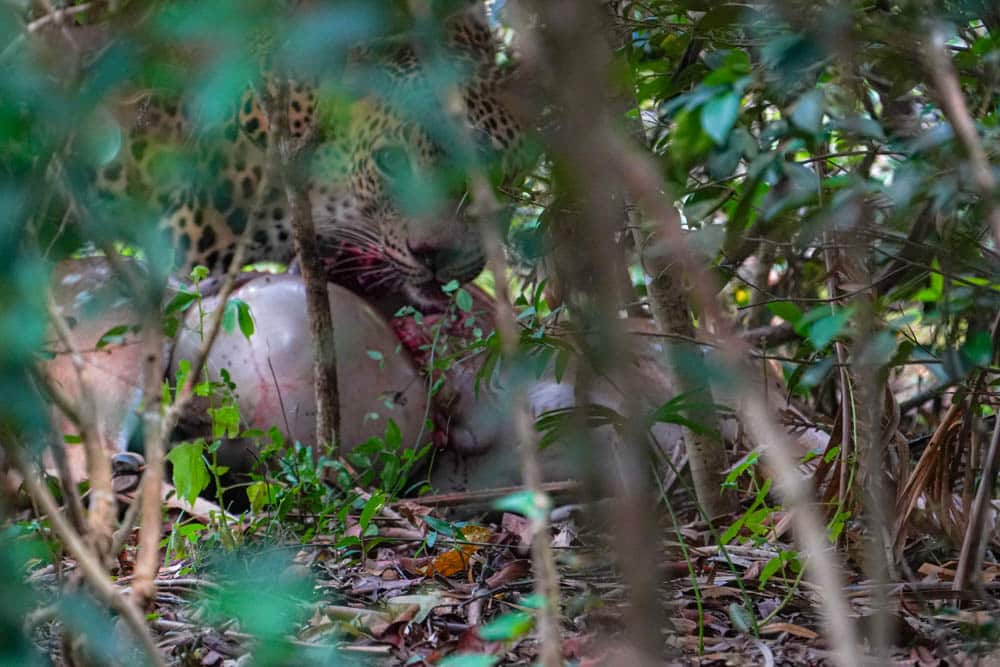
Sri Lanka leopard eating a spotted deer
Related: Peeing with leopards in Chobe National Park
It was far back in the forest, with many obstacles in the way, but I was able to get a clear view of his head dining on the spotted deer. I went on several safaris in Africa two years ago and never saw a kill scene, so this was really cool to see. We stayed in our excellent position until I was able to take enough pictures and then moved on. It is best etiquette that if you have a great view of a leopard, take a few photos and then move on as other people would also like that view.
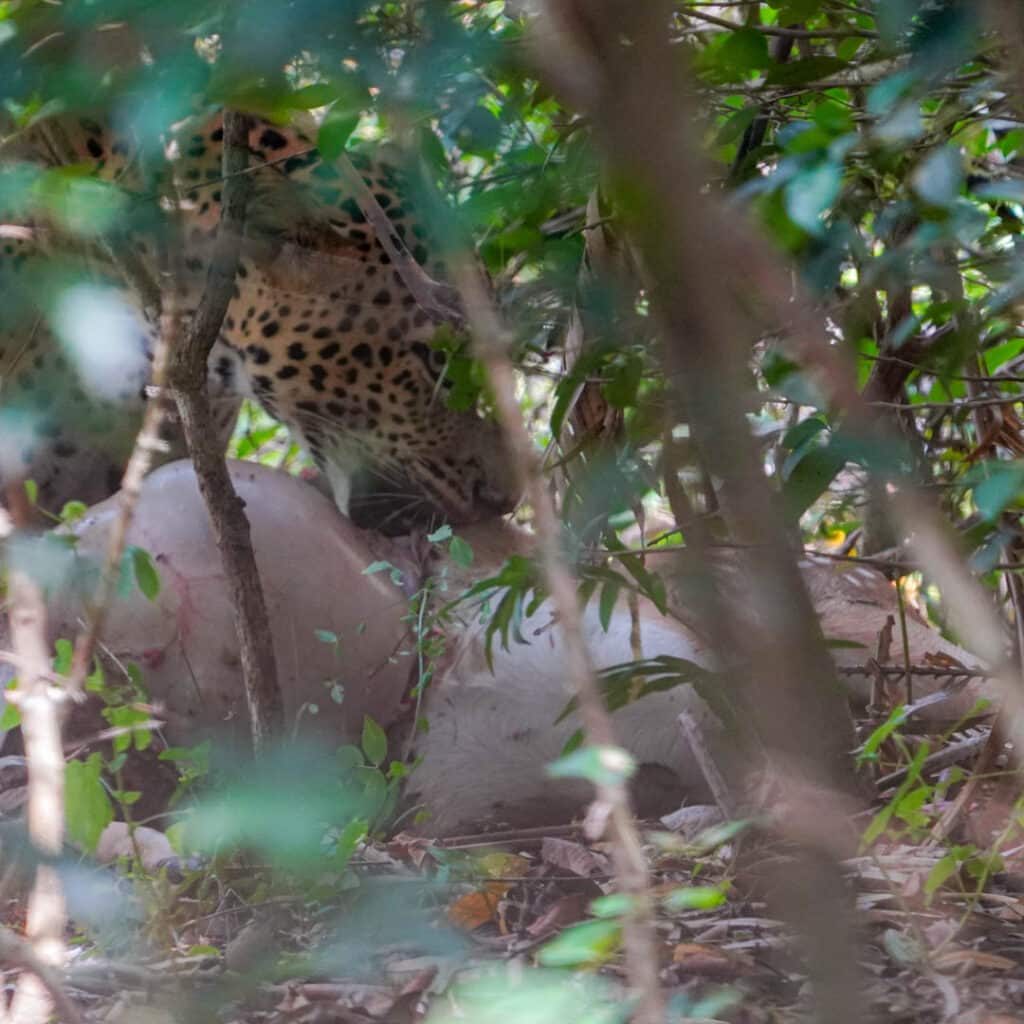
Sri Lanka leopard dining well
Sri Lanka leopard stalking in the grass
Another leopard sighting led us to stake out an area that the guide thought the leopard might walk to. When leopards are seen and on the move through the jungle, guides would sometimes have to guess where they might emerge next. My guide found a spot where he hoped the sighted leopard might move to. After a few minutes of sitting and waiting, sure enough, we began to see movement in the jungle. My guide explained that a leopard stalking in the jungle, will get really low to the ground. The best place to look was on the ground and look for the displacement of vegetation on the ground.
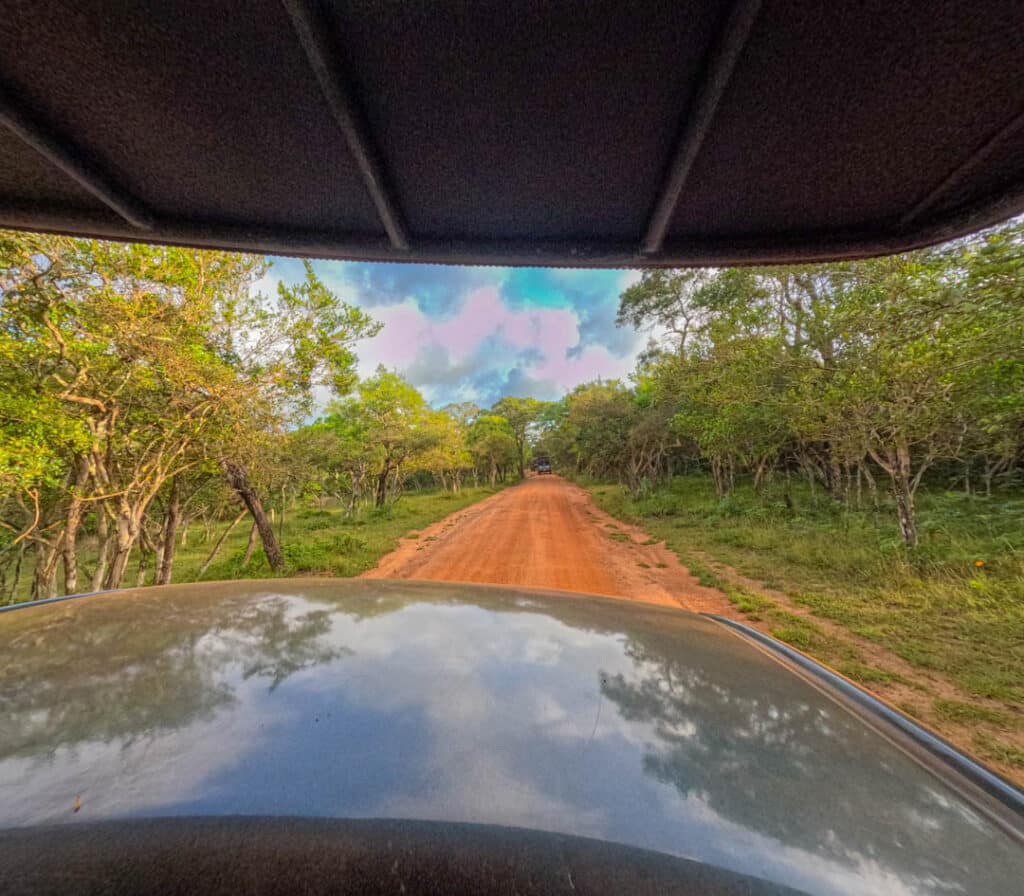
When you see multiple safari trucks it could signify a leopard sighting
The natural thing is to look up to see if you could see them standing above the vegetation. He pointed to a spot, and I began to see plants being flattened by a moving object in the distance. I pointed my camera to where this was happening and could make out a leopard close to the ground moving slowly ahead. Unfortunately, I could not focus on it as there was too much brush in the foreground, but it was still cool to see this beautiful animal so gracefully walking through its environment. This one never emerged in order to take a picture, but it was still a cool memory.
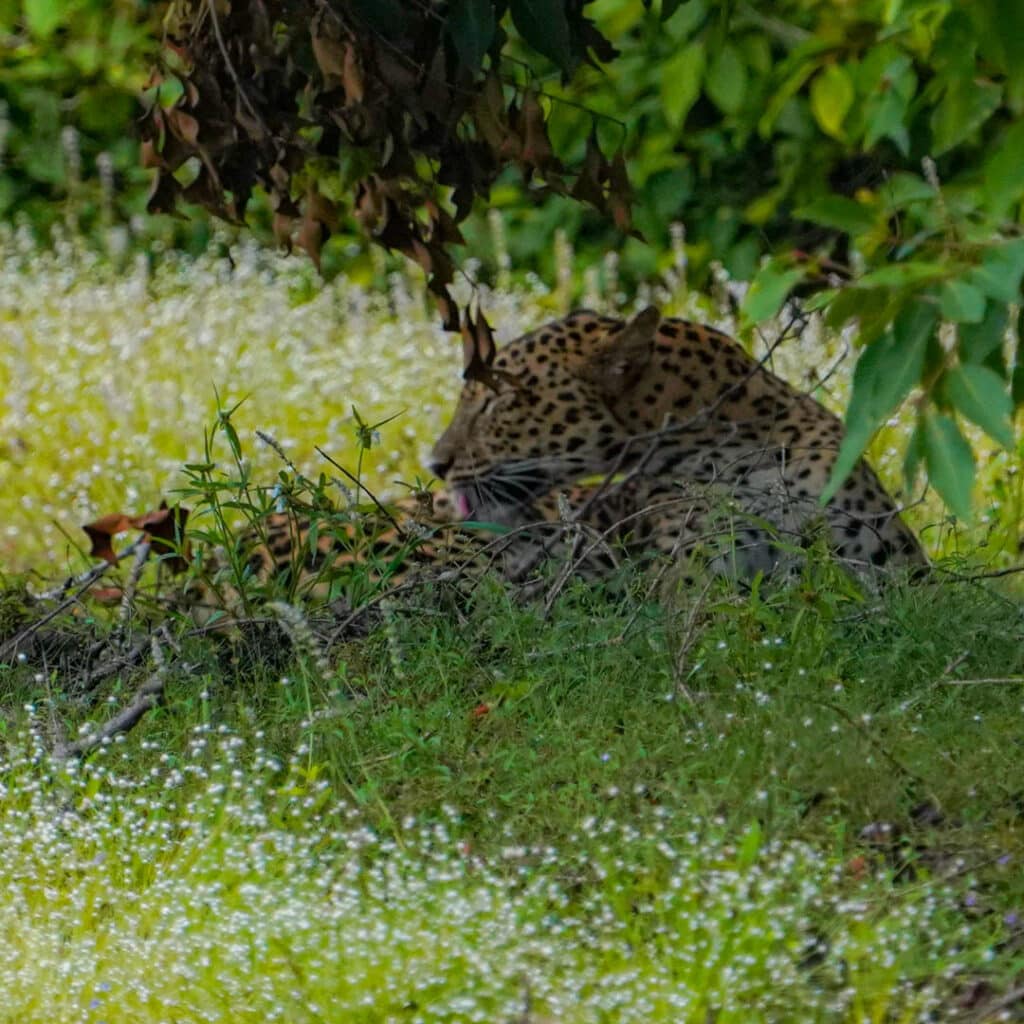
Wilpattu National Park leopard sighting was a memory that will last a lifetime
Five or six leopards seen in Wilpattu National Park
That was the extent of our leopard sightings in Wilpattu National Park. I was not 100% sure how many leopards we saw in the thickets during our first sighting. It was at least three and could have been four. We then saw the one feeding on a spotted deer and the one walking through the jungle. On day two, we did not see one leopard, so one day you might see six and the next day you might see none, so it is best to book as many days as you can depending on budget and time.
Part I Wilpattu National Park hotels and arrival
Part II Wilpattu National Park Sri Lanka adventure
Adventure on!







